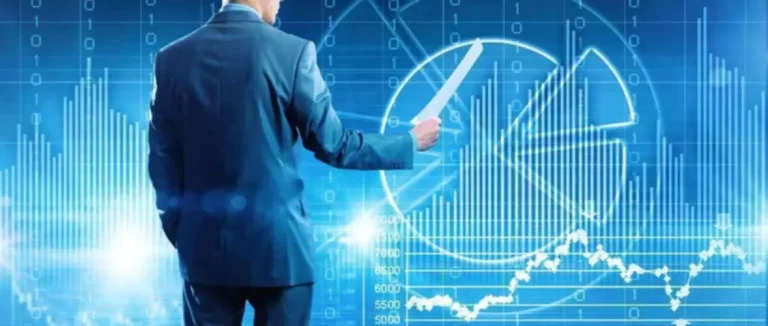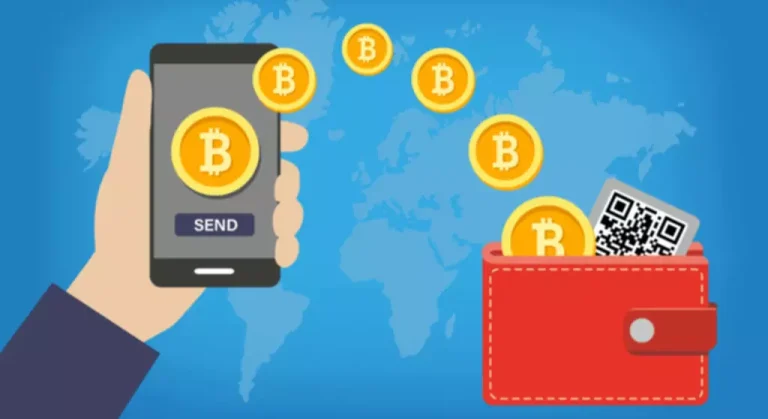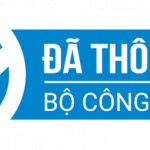Demystifying Real World Assets RWA within the Crypto Sphere davut1karabulut on Binance Square
Content
Along with the help of blockchain technology, transparency and security in RWA transactions will increase the appeal and trustworthiness of these investments. Digital asset tokenization is the action of transforming ownership rights of a physical asset into a digital token on a blockchain platform. These tokens can be effortlessly exchanged, stored, and monitored on a secure and transparent network. DeFi has proven to be the superior technological layer for enabling financial and economic activity, serving as a proof of concept rwa crypto meaning for on-chain finance. Nonetheless, most assets exist beyond the blockchain ecosystem but still have the potential to leverage the benefits of this technology.
Benefits of Tokenization of Real World Assets
Traditionally, real estate investing requires large https://www.xcritical.com/ capital, often limiting participation to institutions or wealthy individuals. Also, property ownership involves illiquidity – meaning it can be hard to sell holdings quickly. The fractionalization process, which involves the division of an asset into a large number of tokens, removes the entry barrier for retail investors. Now, individual investors can own a part of valuable property or art with low funds. These marketplaces provide all the necessary details related to the token, minimum investment amount, asset class, and redemption duration.
The Rise of Real World Asset Tokenization (RWA): Unlocking Asset Liquidity
It is possible to invest directly in almost all major RWA projects through utility tokens. Investing in Cryptocurrency high-value artwork or collectibles faces barriers like high entry costs, concerns about authenticity, and a complex trading process with limited access. Investors can visit the digital token marketplace, such as Securitize, to buy minted tokens.
How to Tokenize Real-World Assets

Platforms are emerging to offer fractional ownership in diverse alternative assets. Ctrl-Alt, built on Algorand, makes it easy for users to invest in assets like property and green energy projects, increasing accessibility to these markets for a broader audience. Tokenization facilitates new modes of investing in raw materials and agricultural products. Agrotoken, operating on Algorand, is innovating in this space by tokenizing commodities such as soybeans, corn, and wheat. This enables farmers to access loans backed by these tokenized assets, providing financial flexibility in a capital-intensive industry. Algorand’s low transaction fees and ability to handle thousands of transactions per second ensure cost-effective scalability for tokenized assets.
What is the difference between a crypto exchange and a brokerage?
BNB Greenfield is a pragmatic solution that seamlessly blends decentralized storage with blockchain technology. Greenfield is designed to streamline data management and intertwine data ownership with the DeFi landscape. The Greenfield core team’s focus revolves around a comprehensive set of goals aimed at elevating performance, enhancing developer experience, and optimizing data access services.
You can convert the property into 10,000 tokens on a blockchain and list them at $100 each. It would allow multiple investors to buy a share of your property thereby helping you avoid the trouble of selling it directly to one buyer. The digital tokens represent ownership of share in your property or a real-world asset. A key attraction of RWA tokenization is tradability and transferability, which happens post-primary issuance. RWA token investors do not want to be locked in forever and require options for liquidity.

On the other hand, where there is a pooling of funds from, and issuance to, multiple investors (through fractionalization), those tokens will most likely constitute securities. This is the prevailing market structure because it unlocks the secondary trading and liquidity aspects of blockchain as well. Jenny Johnson, the CEO of Franklin Templeton, the $1.5T USD global investment firm, says “Bitcoin is the greatest distraction from the biggest opportunity in finance, tokenized assets”. In the RWA tokenization landscape, determining whether a tokenized RWA is treated as security boils down to the asset being tokenized, the token’s structure, and the regulatory definition at play. Different countries employ different criteria for what qualifies as a “security”.
Tokenization of real-world assets helps create clear and unchangeable records of ownership, boosting investor trust. This level of transparency and security makes managing assets much easier and more reliable. The growing curiosity around what is RWA in crypto further highlights how such an innovative approach is transforming traditional finance. It’s visible how the tokenization of RWAs brings numerous advantages to both investors and the broader financial market.
Real world asset tokenization is the process of transforming ownership rights in a real-world asset (RWA) into digital tokens stored on a blockchain. The convergence of classical financial systems with blockchain innovation has ushered in a modernistic method for managing and allocating assets via Real World Assets (crypto RWA). Let’s explore what RWA in crypto is and what tokenization of real world assets gives, shining a spotlight on RWA crypto projects.
- Digital certificates of ownership or tokens representing fractions of the assets are created on the blockchain, enhancing transparency and verification.
- It’s a community-driven ecosystem that leverages Astar↗ and Polkadot’s blockchain infrastructure to provide a secure and transparent platform for data transfer and project monitoring in the AEC space.
- For those interested in supporting and participating in the Polkadot community in general, learn more about how to get involved and share your voice in the community in the forums today↗.
- Real-world assets (RWA) consist of a collection of tangible and intangible assets like financial contracts, physical properties, or intellectual properties.
According to Binance’s July 2023 RWA market research, the tokenized asset market is estimated to reach $16 trillion by 2030, which is a significant increase from $310 billion as of 2022. The RWAs are tangible or intangible assets existing in the physical world with inherent value. On the other hand, DeFi represents a novel financial system built on blockchain technology, offering various financial services without traditional intermediaries like banks. The entire concept of RWA tokenization is based on creating a blockchain-based digital investment solution for subjects that have value or a relevant physical existence. So far, the tokenization of real-world assets has been applied across many industries, covering real estate, vehicles, collectibles, fine art, noble metals, securities, stocks and bonds, etc.
Once the legal framework is established, the next crucial step is ensuring the secure custody of the real-world asset (RWA) and its corresponding security tokens. Let’s dive into the fascinating world of RWAs, exploring what they are and how they are tokenized. We’ll see how major exchanges like Binance, Bybit, and Kraken integrate these assets into decentralized finance (DeFi). The tokenization of real-world assets changes how we interact with these investments by cutting out middlemen, speeding up transactions, and making what was impossible, possible. The future of finance leans towards on-chain operations, with interoperable blockchains supporting potentially trillions of dollars↗ in the form of tokenized RWAs. Polkadot’s scalability, security, and cross-chain communication capabilities position it as a leading contender in this rapidly evolving landscape.
What kind of methods of recovering your cryptocurrency assets in case you lose your wallet or forget your primary password does the wallet offer. Whether the crypto wallet requires a Pin code as an extra layer of security when completing an action. Whether the crypto wallet requires multiple keys to authorize a transaction as an extra layer of security. Whether the crypto wallet requires two-factor authentication as an extra layer of security when completing an action. It’s vital to get a clear idea of these differences if you’re a stakeholder in the RWA ecosystem, as they influence the security, scalability, and cost-effectiveness of the tokenization process. Undoubtedly, this will give you a much better understanding of what is RWA in crypto.
You must note that real-world assets could be physical or digital with intrinsic value outside the blockchain and crypto ecosystem. You can welcome these assets into the blockchain and crypto landscape through tokenization. Tokenization helps in creating a digital twin of the assets on a blockchain, thereby making them useful for new opportunities in trading, investment and ownership.
Ensure your investment choices align with your financial goals and adhere to local regulations. The European Investment Bank (EIB) issued a EUR 100m digital bond on a blockchain platform in April 2021 in collaboration with major financial institutions. This digital bond issuance process, including registering and settling, was entirely conducted on the blockchain, showcasing the efficiency of RWA real-world assets tokenization. Traditional finance firms are excited by the idea of tokenizing assets they already trade, such as gold, stocks and commodities. Investment fund giant Franklin Templeton launched the Franklin OnChain U.S. Government Money Fund in 2021 on Stellar and expanded to Polygon in 2023. The fund is the first U.S. registered mutual fund to use a public blockchain to process transactions and record share ownership.
By securing necessary trading licenses, we ensure compliance and transparency, positioning ourselves as a unique and reliable player in this emerging field. Our commitment to regulatory adherence underscores the importance we place on creating a secure and trustworthy environment for our clients and investors. Sure, there are hurdles like dealing with different regulations, but as technology evolves and rules adapt, RWA Tokens are set to keep shaking up how we invest, making traditional asset ownership more accessible to everyone.

